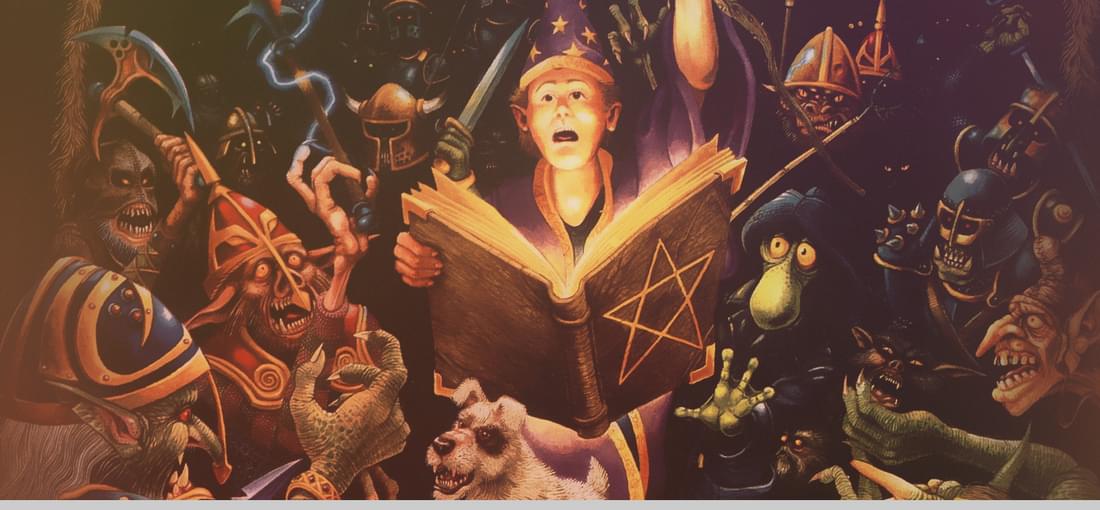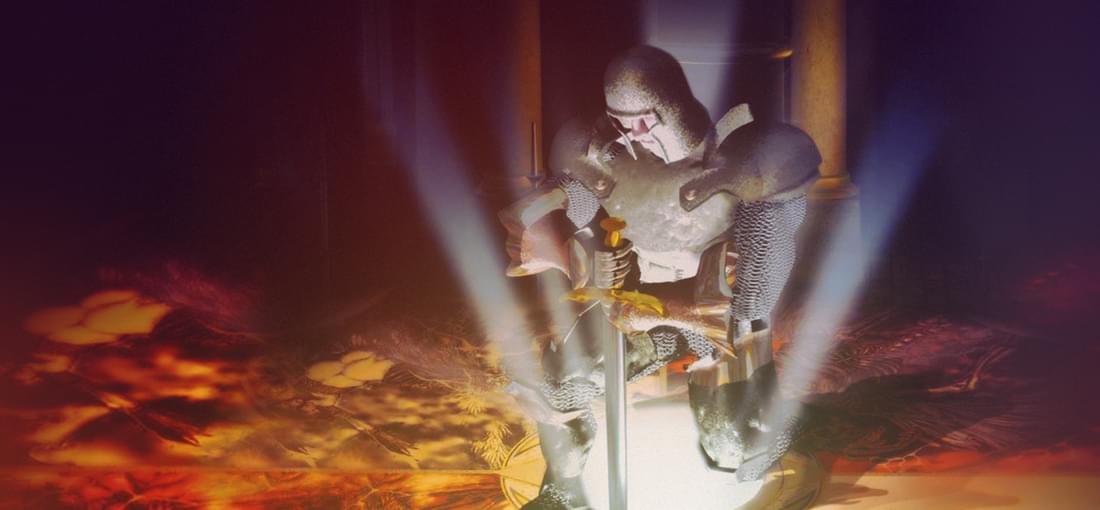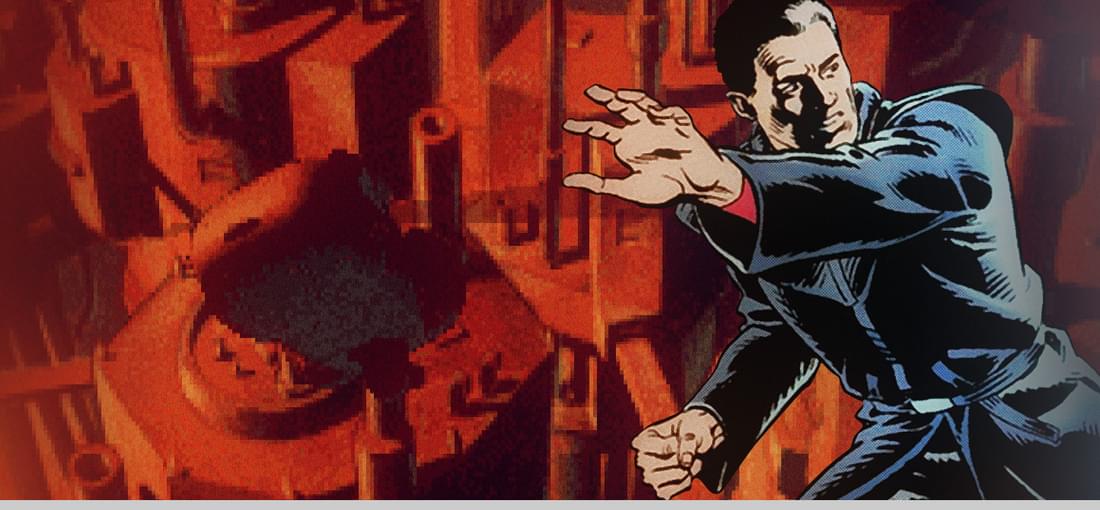



Simon the Sorcerer is one of those games that I imagine people who still remember the games of the early nineties get nostalgic about. It's a fun game, to be sure, and you'll soon get over the low graphics and learn to appreciate the fun that is Simon the Sorcerer. WARNING: INTENTIONAL SMALL SPOILERS AHEAD VISUALS; 5/5: Yes, I know, that's a high score for a game in which every character is a 2D sprite, but I think it's worth it. The forests and fields and backgrounds are all beautifully drawn, Simon gets a convincing animation for nearly every action he performs, and the dancing demons you get to see in the end credits look great. Every character and object looks like it is supposed to, and there are absolutely no instances of Featureless Blob Syndrome, an ailment common to other adventure games of the StS era which have vital plot items disguised as meaningless pixels on the screen. SOUNDS; 4/5: The music, comprised of simple midi tunes, is suprisingly compelling and memorable, although I wouldn't go so far as to call it spectactular; it is a midi tune, after all. No, the place where this game's sound REALLY shines is in the voice acting. You will learn to love to hear Simon talk, and his constant barrage of tongue-in-cheek jokes will leave you smiling even as you make him walk into situations which are guaranteed to make him suffer. WRITING/STORY 4/5: Adventure games revolve around the writing, more often than not, and the writing in StS is great. Where else are you going to see a troll forming a picket line over a bridge, alcoholic dwarves, or demons with cockney accents? I won't spoil anything this time, but suffice to say that it's funny. The only problem with the writing is that it doesn't always blend well with the actual puzzles you have to work through; for instance, you lose your spellbook to goblins at the beginning of the game, and have to go through a sidequest to get it back from the goblins, but no one ever tells you "Hey, dude, you lost your spellbook. Shouldn't you go find it?" And, for that matter, once you actually HAVE the spellbook, you never use it. GAMEPLAY; 4/5: As with a lot of adventure games, you may feel rather aimless and misdirected as you play through StS; since your goal is to reach an ultimate objective by gathering up a bunch of random items and using them on random people or objects, you tend to do a lot of wandering around, and at least some of the puzzle solutions seem kind of arbitrary, like the hidden room under the woodcutter's cabin that you can only reach by fiddling around with his fireplace. It is fun, though, and you have the benefits of the F10 key (which highlights all the things on the screen that you can interact with) and the wise old owl (who will give you hints about some of the puzzles). VALUE FOR PRICE/OVERALL; 4/5: This is a fun game, for all the reasons listed above, but Simon the Sorcerer ultimately falls into the same pit that most adventure games fall into: you can only play it once, and it's fairly short. You can finish the whole thing in about four hours, and once you have done that there's no more suprises in the game for you, unless you want to go back and choose different dialogue choices at the conversations that have scripted endings.

Disciples: Sacred Lands is a Turn-Based Stragegy game that focuses on a series of holy wars between four competing factions, each of which has their own special array on unique units and magic spells. What makes it unique among strategy games, though, is how the battles work; tactics in combat are really, really simple. So simple, in fact, that you could just use a calculator to guess how they'll turn out and be right most of the time. The actual "Strategy" part of this TBS game lies in how you prepare for your battles: the tactics of this game by Strategy First are all about setting up the ideal conditions for combat, rather than actually fighting. VISUALS; 4/5: The game isn't very graphically impressive. It's not ugly by any means, but it's nothing spectacular. Then again, given that it came out almost ten years ago, I guess I should be fairly impressed with it. At any rate, visual spell effects look cool, and everything looks like it is supposed to. In particular, the really big monsters that take up two whole combat "squares" look nice. Anyway, it's a TBS, right? What do the visuals really matter? SOUNDS; 3/5: The sound is okay. Not bad, or good, but okay. The voice acting is pretty minimal, the sounds of swords and explosions is standard, and the "bite" sound that a number of different animal creatures make when they attack sounds like someone crunching on a potato chip. The music isn't bad, and there's a nice variety of tracks, but it doesn't really add anything to the experience. You can play this game with no sound and feel almost exactly the same. WRITING/STORY; 4/5: The stories that the game's scenarios revolve around, while simple, are pretty good. The narration for the sagas (campaigns) comes out like a historical account of things that actually happened in the Disciples world, and it's just interesting enough to make you want to play on and see what happens. However, the delivery of these stories could use a little work, I feel. When you're actually playing the game between story narrations, the "storytelling" is limited to an occasional sentence or two uttered by your troops or by defeated enemies whenever you conquer a city. Compared to Heroes of Might and Magic, which could give you several paragraphs of exposition in response to several different ques, it's kinda tame. GAMEPLAY; 4/5: As stated before, the game's strategy primarily involves actions you perform outside of combat. Tasks like putting your soldiers in an ideal formation; choosing the right troops for the job; leveling up your soldiers and generals; casting spells that bless, curse, damage, or summon stuff; using your Thief units to poison, disorganize, or assassinate enemy soldiers; and gathering resources are all generally more important than actually fighting. One big indicator of this is in how it is nearly impossible to sieze the capital cities of your enemies; every capital city is guarded by a divine avatar of that city's relevant deity, and this avatar can move with blinding speed, soak up tons of damage, and deal hundreds of points of damage with every attack; its only weakness is that it cannot leave the capital. As long as the capital stands, the civilization that capital is founded on lives, and thus you cannot "beat" your enemies in open combat. Instead, the way to "win" over your enemies is to cut them off from all resources. Surround their capital with your own towns and convert their land to your purposes, and whenever any units leave the capital to try to get any resources at all, kill them immediately. Keeping your foes too weak to fight back, or making yourself too strong to challenge, is the key to victory. There is only one real flaw in this system, however, and that flaw is repetition. Every mission you go on generally follows the same pattern: you start by gathering resources, then you conquer stuff, and then you gather more resources, level up your troops, buy stuff, conquer stuff, gather resources, and follow this pattern until you eventually get to a point where you have one or two parties of high-level characters who you use to kill everything, and supplement their strength with magical buffs, curses, and airstrikes. So it goes with every single mission. However, unless you're a really impatient or sensitive person, you'll probably be too addicted to notice the repetitiveness, and you can change it up by playing different civilizations or altering the difficulty level. VALUE FOR PRICE/OVERALL; 4/5: For ten bucks, this is a pretty good buy. The only really serious flaw in it is that it doesn't have much replay value; the scenarios you get when you buy it are all you've got, and if you try to replay anything, you may just find yourself doing almost exactly the same things as you did the first time you played, and the game will get old fast.

Lure of the Temptress is a short high-fantasy game which is best played at times when you don't have anything else to play and you REALLY don't want to be doing anything constructive, like exercising. WARNING: MINUTE SPOILERS AHEAD. VISUALS; 4/5: The backgrounds are good, and the cutscenes are generally also good, and the characters in the story are great at looking like what they represent; a weaselly, conniving thief, a fair young maiden, a fat friar, and so forth. However, the game isn't particularly advanced in the animations department, and while the graphics are generally okay to look at, they aren't particularly memorable or special. SOUNDS; 2/5: There is good music in the cutscenes, otherwise this would get a score of 1. Outside of the cutscenes, there is no music at all, and all the sounds are restricted to MIDI pitches, which are just bad enough in places to make me think that the game would sound better if it were totally silent. WRITING/STORY; 4/5: All-around good. Yes, it's cliched high fantasy, but that doesn't make it bad; Ratpouch in particular is an entertaining fellow. The story also has a pretty good flow to it. The only flaw in the game's story is the ending, which is disappointing in a number of ways. GAMEPLAY; 3/5: The interface is a little clunky, particularly when you're asking a henchman-character to do something for you. It's not bad, though. More serious is the fact that, while your character's primary goals are always clear, the little sidequests you need to complete in order to achieve those goals are frequently not. Also, if you make a mistake that would prevent you from winning the game, but which doesn't actually kill your character, you are never given any hint that you screwed up. On the plus side, this game Doesn't suffer too badly from "Featureless Blob Syndrome," an ailment common to older adventure games which is characterized by an inability to distinguish important objects environment from the background. VALUE FOR PRICE/OVERALL; 3/5: This game is free. If it cost more than five USD, I would adivse you not to go for it, but for online freeware, it's pretty good.

Beneath a Steel Sky is pretty good game for those of us who enjoy adventure games, or just like entertaining dialogue. Overall, it's nice, but there are a number of factors which keep it from being a 5. WARNING: MINUTE SPOILERS AHEAD. VISUALS; 5/5: Great for the time period. I especially like how there's a unique animation for each and every single thing that happens to Foster, the main character, something which isn't always seen even in modern games. The backgrounds and artwork is all around good. SOUNDS; 4.5/5: The music is pretty good (Ambiance! Ambiance!), the sound is excellent, and the voice acting is just shy of perfect, with emphasis on "Just Shy." The game is not fully voice-acted, and it can be a little jarring sometimes to see text appear over someone's head when you expected him/her to speak. Also, it sometimes seems like the main character's dialogue lacks appropriate emotion; in particular, Foster doesn't do a good job expressing shock or horror. He does a great deadpan, though. WRITING/STORY; 4/5: The overall story is pretty good, and the normal dialogue with the characters is frequently laugh-out-loud funny. The interactions between Joey and Foster in particular will be remembered fondly, as will the courtroom scene. However, there's a certain problem in that bits of the story seem disconnected with eachother (see "GAMEPLAY."). GAMEPLAY; 3.5/5: I realize that this last complaint of mine might just reflect how much I suck at adventure games, but I often felt that the lack of defined objectives in the game made it difficult to advance. The only instruction you're ever given is "Get to ground level," which is woefully insufficient when you consider all the different factors involved in advancing from one area to the next. I had to refer to a walkthrough often because I had no clue about what I was supposed to be doing. On top of that, the game is a bit inconsistent about how it judges your forward progress; sometimes it's not possible to advance to the next area until all the relevant objectives in the area you're in are met, while at other times you can just about get away with missing something really important. On top of that, several of the names of the objects in your inventory have changed from the original version; the "Metal Bar" for instance, is actually a Crowbar, and it is often used like a crowbar. However, since it was called "Metal Bar," it often didn't occur to me to use it to pry anything open until I looked up the answers. This game also suffers from a serious case of "Featureless Blob Syndrome." FBS is a common ailment among older adventure games, is is characterized by a recurring lack of ability to discern important objects in the environment from the background environment. With that said, the game interface was generally pretty easy to use and I never had any difficulty doing something once I understood what it was I had to do. VALUE FOR PRICE/OVERALL ASSESSMENT 4/5: Given that this game is free, I can't recommend it more highly. Just be aware that it's an old-school game, and therefore very unforgiving.